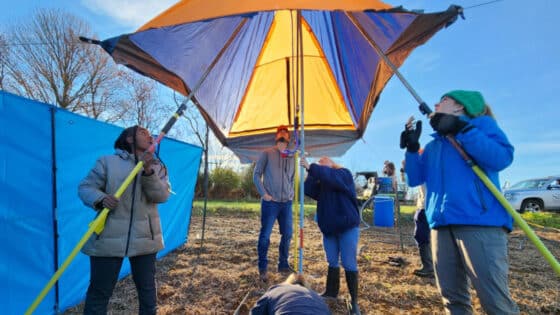Jackson, J.K., and V.H. Resh. 1989. Pages 342-345 in D. Abell (editor). Proceedings of the California Riparian Systems Conference: protection, management, and restoration for the 1990’s. General Technical Report PSW-110, Pacific Southwest Forest and Range Experiment Station, Forest Service, U.S. Department of Agriculture, Berkeley, California.
https://www.fs.usda.gov/treesearch/pubs/27995
Abstract
Most adult aquatic insects that emerge from streams live briefly in the nearby riparian zone. Adult activities, such as mating, dispersal, and feeding, influence their distribution in the terrestrial habitat. A study at Big Sulphur Creek, California, has shown that both numbers and biomass of adult aquatic insects are greatest in the near-stream vegetation; however, adults can be relatively common 150 meters or more from the stream. Because adult aquatic insects are abundant, they represent a primary food resource for many riparian insectivores. The role of adult aquatic insects in the riparian zone must be better understood for riparian management plans to be complete.


